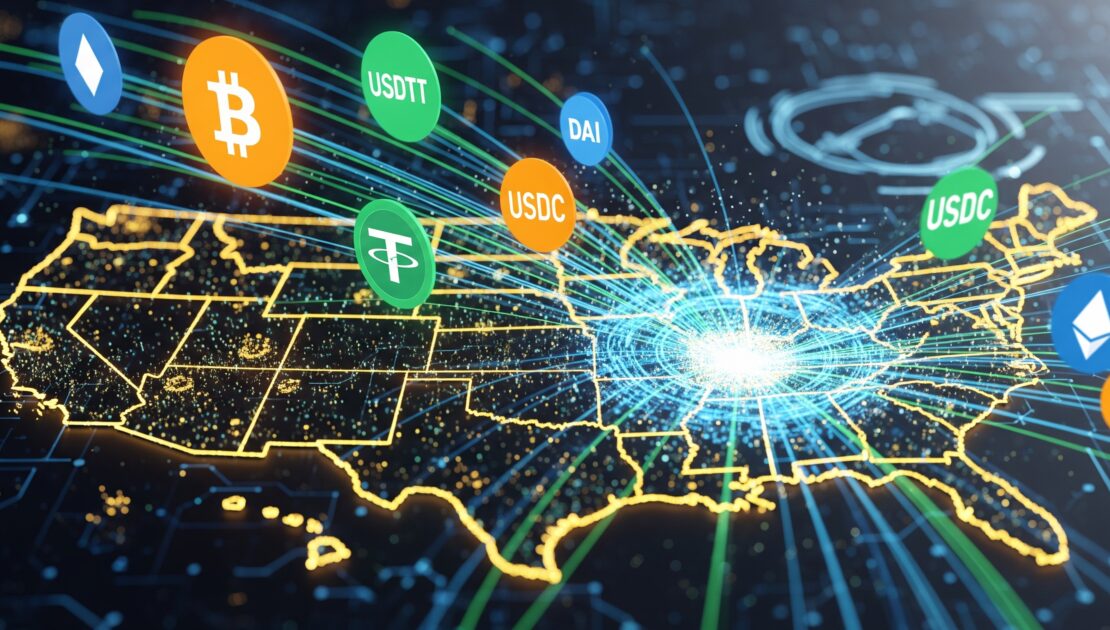How Bitcoin and Stablecoins Are Spearheading the U.S. Payments Revolution

In the fast-paced world of finance, digital assets have evolved from fringe curiosities to cornerstone elements of global commerce. Just yesterday, on August 20, 2025, Federal Reserve Governor Christopher Waller delivered a compelling keynote at the Wyoming Blockchain Symposium, declaring that payments are in the midst of a “technology-driven revolution.” With Bitcoin and stablecoins at the forefront, this shift is not just about speculation—it’s about reshaping how money moves, businesses operate, and economies interconnect. Drawing insights from recent developments, including new U.S. legislation, let’s explore how these innovations are transforming the financial landscape.
The Dawn of a Technology-Driven Payments Era
Payments have always been about efficiency, security, and accessibility, but the integration of blockchain technology marks a pivotal leap forward. Waller emphasized that stablecoins and other digital assets represent the “latest stage in this transformation,” building on historical innovations like credit cards that evolved from manual imprints to seamless mobile taps.
Today, Bitcoin stands as a prime example of this evolution. Once dismissed as a speculative bubble, it has surged in value from mere cents to over $100,000 per coin, cementing its role as a digital store of value. But accessibility is key: investors don’t need to buy a whole Bitcoin. Fractional ownership allows entry with as little as $100 or $1,000, making it inclusive for retail participants. This democratization is fueling broader adoption, from individual portfolios to institutional investments.
Why the Hunt for the ‘Next Bitcoin’ Is a Fool’s Errand
Retail investors often chase the dream of discovering the “next Bitcoin,” hoping for life-changing returns. However, experts like Waller argue this pursuit is misguided. Bitcoin’s success stems from its unparalleled network effect, true decentralization, and emergence during a unique historical moment—no other token has replicated this trifecta.
Speculating on altcoins or meme tokens is more akin to gambling than investing, often driven by hype rather than fundamentals. Instead, the real value lies in Bitcoin’s established infrastructure, now integrated into ETFs, mortgages, and even corporate balance sheets. As the article notes, while Bitcoin’s journey is extraordinary, its lessons point to sustainable innovation over quick riches.
Stablecoins: The Digital Dollar Extending U.S. Influence Globally
Enter stablecoins—pegged to fiat currencies like the U.S. dollar—which are poised to redefine cross-border payments and remittances. Waller highlighted their potential to “maintain and extend the role of the dollar internationally,” particularly in regions plagued by inflation or limited banking access. These assets act as a bridge, offering low-cost, instant transfers that traditional systems struggle to match.
A significant catalyst is the recent GENIUS Act, signed into law in July 2025, which provides the first comprehensive U.S. framework for crypto regulation. This legislation is accelerating stablecoin adoption, enabling faster integration into everyday finance. For instance, in emerging markets, stablecoins serve as a hedge against currency volatility, facilitating everything from international trade to family remittances. Waller’s vision aligns with private-sector leadership, where innovations like these thrive under regulatory oversight.
Private Sector Innovation Meets Federal Infrastructure
Waller, a proponent of free-market dynamics, believes the private sector is best equipped to “allocate resources and take risks to explore the value of new technologies.” The Federal Reserve’s role, he argues, should focus on providing foundational infrastructure—like Fedwire for large-value transfers and FedNow for instant payments—while ensuring stability and compliance.
This balanced approach is evident in the convergence of traditional finance and digital assets. Companies are leveraging tokenized assets, distributed ledgers, and smart contracts to streamline operations. Organizations like the Blockchain Association are fostering dialogue between regulators and innovators, as seen in Waller’s fireside chat with its CEO, Summer Mersinger. The result? A more resilient financial ecosystem that benefits consumers and businesses alike.
AI: The Next Wave in Payments Optimization
No discussion of payments innovation is complete without artificial intelligence (AI). Waller pointed to “agentic AI” as the emerging frontier, capable of automating complex tasks like fraud detection, compliance monitoring, and 24/7 transaction reconciliation. Machine learning algorithms are already enhancing security in real-time, reducing risks in an increasingly digital world.
As AI converges with blockchain, expect smarter, faster payments. For example, AI-driven systems could predict and prevent fraud in stablecoin transactions or optimize Bitcoin mining efficiency. This synergy underscores Waller’s call for deeper engagement between the Federal Reserve and industry pioneers.
Looking Ahead: A Mainstream Future for Digital Assets
The payments revolution led by Bitcoin and stablecoins isn’t hype—it’s happening now. From extending the dollar’s global dominance to empowering private innovation, these technologies are building a more inclusive, efficient financial system. As Waller aptly put it, the Federal Reserve stands to gain from collaborating with the digital asset ecosystem.
For businesses and investors, the message is clear: embrace these tools thoughtfully, focusing on real-world utility over speculation. As we navigate this transformative era, staying informed and adaptable will be key to thriving in the new digital economy.

